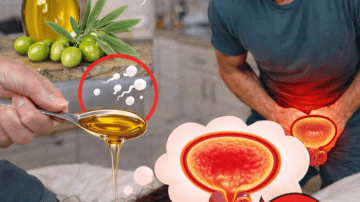Imagine a plant so enchanting it folds its leaves at the slightest touch, earning names like “sensitive plant,” “touch-me-not,” or “shy plant.” Mimosa pudica is more than just a botanical curiosity—it’s a time-honored herbal remedy with a treasure trove of potential health benefits. For centuries, cultures around the world have harnessed its leaves, stems, and roots to create healing concoctions. Today, Mimosa pudica tea is stealing the spotlight as a natural elixir, celebrated for everything from soothing digestion to promoting calm. Curious about this delicate yet powerful plant? Dive into this guide to discover how to prepare Mimosa pudica tea, its remarkable benefits, and how to use it safely to elevate your wellness routine.

🌿 Why Mimosa Pudica Is a Game-Changer
Mimosa pudica isn’t just a pretty plant with a quirky personality. Its leaves, stems, and roots are packed with bioactive compounds like tannins, flavonoids, and alkaloids, which have been used in traditional medicine for generations. From supporting gut health to calming the mind, this plant offers a gentle, natural approach to wellness. While modern science is still catching up, early studies and centuries of anecdotal evidence suggest Mimosa pudica tea could be your new go-to for holistic health. Ready to explore its benefits and learn how to brew the perfect cup? Let’s get started.
The Remarkable Benefits of Mimosa Pudica Tea
Mimosa pudica tea offers a range of potential health benefits, rooted in tradition and supported by emerging research. Here’s why this herbal infusion is generating buzz.
🥗 1. Soothes Digestive Discomfort
Struggling with bloating, mild stomach upset, or irregular digestion? Mimosa pudica tea may come to the rescue. Traditional healers have long used this plant to ease gastrointestinal discomfort. Its tannins and flavonoids create an astringent effect, which may help calm irritation and reduce symptoms like diarrhea. Sip this tea after a heavy meal to support a happier, healthier gut.
🛡️ 2. Fights Bacteria and Parasites
Mimosa pudica’s antimicrobial properties make it a formidable foe against certain bacteria and parasites. Preliminary studies suggest its extracts can combat harmful microbes, while traditional practices have used it to support gut health by targeting intestinal parasites. While more research is needed, this tea could be a natural ally for maintaining a clean, balanced digestive system.
🔥 3. Reduces Inflammation
Inflammation can wreak havoc on your body, from joint discomfort to skin irritations. Mimosa pudica has been used in folk medicine to ease mild inflammation, both internally and externally. Drinking the tea may help soothe internal inflammation, while cooled tea can be applied as a wash for minor skin irritations. Its anti-inflammatory potential makes it a versatile addition to your wellness toolkit.
🩹 4. Promotes Wound Healing and Skin Health
Mimosa pudica’s healing properties extend to the skin. Traditionally, its leaves and roots have been mashed into pastes for minor cuts, rashes, or irritations. Drinking the tea may support overall skin health, while using cooled tea as a topical rinse can soothe irritated areas. This dual-purpose remedy is perfect for those seeking natural skin care solutions.
😌 5. Encourages Calm and Relaxation
Feeling stressed or restless? Mimosa pudica tea may offer a gentle calming effect. Traditional sources praise its mild sedative properties, which could help ease occasional anxiety or promote restful sleep. While scientific evidence is still emerging, many users report a sense of tranquility after sipping this earthy infusion, making it a soothing ritual for winding down.
🌱 How to Prepare Mimosa Pudica Tea
Brewing Mimosa pudica tea is simple, but quality and care are key to unlocking its benefits. Follow these steps to create a perfect cup.
Step 1: Source Quality Ingredients
The foundation of great tea is high-quality Mimosa pudica. Opt for organically grown plants to avoid pesticides or contaminants. If you grow Mimosa pudica at home, you’re in luck—just ensure proper identification, as similar-looking plants can be mistaken for it. Otherwise, purchase dried leaves from a reputable herbal supplier.
Step 2: Dry the Plant Properly
To prepare the leaves for tea:
- Harvest fresh leaves and tender stems.
- Rinse gently under cool water to remove dirt.
- Spread them out in a warm, shaded area with good airflow.
- Let them air-dry until crisp and easily crumbled, which preserves their active compounds.
Step 3: Brew the Perfect Cup
What You’ll Need
- 1 teaspoon of dried Mimosa pudica leaves (per cup of water)
- Fresh, filtered water
- A teapot or heat-safe cup
- Optional: Honey or lemon for flavor
Instructions
- Bring 1 cup of filtered water to a boil.
- Place the dried leaves in a teapot or cup.
- Pour the hot water over the leaves and cover to trap the aroma.
- Steep for 5–10 minutes, depending on desired strength.
- Strain the tea into a cup and add honey or lemon to taste, if desired.
Flavor Profile
Mimosa pudica tea has a mild, earthy, and slightly herbal taste. If it’s too strong, reduce the steeping time or use fewer leaves. For a smoother sip, a touch of honey can enhance the experience without overpowering the plant’s natural flavor.
🛠️ Beyond the Teacup: Other Uses for Mimosa Pudica
Mimosa pudica’s versatility extends beyond tea, offering creative ways to incorporate it into your life.
Topical Treatments
Blend fresh or dried leaves into a paste for minor cuts, rashes, or insect bites. This traditional remedy harnesses the plant’s soothing and antimicrobial properties to promote healing.
Herbal Supplements
Some brands offer Mimosa pudica in capsule form, marketed for gut health or parasite cleansing. These are convenient for those who prefer not to brew tea but still want the benefits.
Ornamental Charm
Beyond its medicinal uses, Mimosa pudica is a delightful garden plant. Its touch-sensitive leaves make it a fun addition to any outdoor space, sparking curiosity in kids and adults alike.
⚠️ Safety First: Precautions for Using Mimosa Pudica Tea
While Mimosa pudica tea is generally safe for most people, a cautious approach ensures you enjoy its benefits without risks.
Start Small
If you’re new to Mimosa pudica, begin with a small amount (e.g., half a cup) to test your body’s response. Some individuals may experience mild gastrointestinal discomfort or allergic reactions like itching or rashes. Discontinue use and consult a doctor if you notice any adverse effects.

Limited Research
While traditional use is extensive, large-scale clinical studies on Mimosa pudica are still limited. Its efficacy for specific conditions isn’t fully proven, so use it as a complementary remedy rather than a cure-all.
Pregnancy and Breastfeeding
Pregnant or nursing women should avoid Mimosa pudica tea unless approved by a healthcare provider, as safety data is scarce.
Medication Interactions
If you’re on prescription medications or have chronic health conditions, consult a doctor before drinking the tea, as it may interact with certain drugs.
Quality Matters
Always verify the plant’s identity to avoid confusion with similar species. Use clean, uncontaminated leaves to ensure safety and effectiveness.
Why Mimosa Pudica Tea Deserves a Spot in Your Routine
Mimosa pudica tea is more than just a beverage—it’s a bridge to centuries-old healing traditions. Its potential to support digestion, fight microbes, reduce inflammation, heal skin, and promote calm makes it a versatile addition to any wellness routine. Plus, its affordability and ease of preparation mean you can enjoy these benefits without breaking the bank.
Whether you’re sipping it for gut health, applying it to soothe skin, or simply marveling at the plant’s shy movements, Mimosa pudica offers a unique blend of science and tradition. Start with a small batch, savor the earthy flavor, and let this humble plant work its magic.
🌟 One plant, endless possibilities. Brew your first cup of Mimosa pudica tea today and discover its gentle power!






